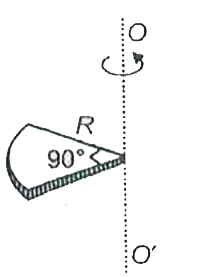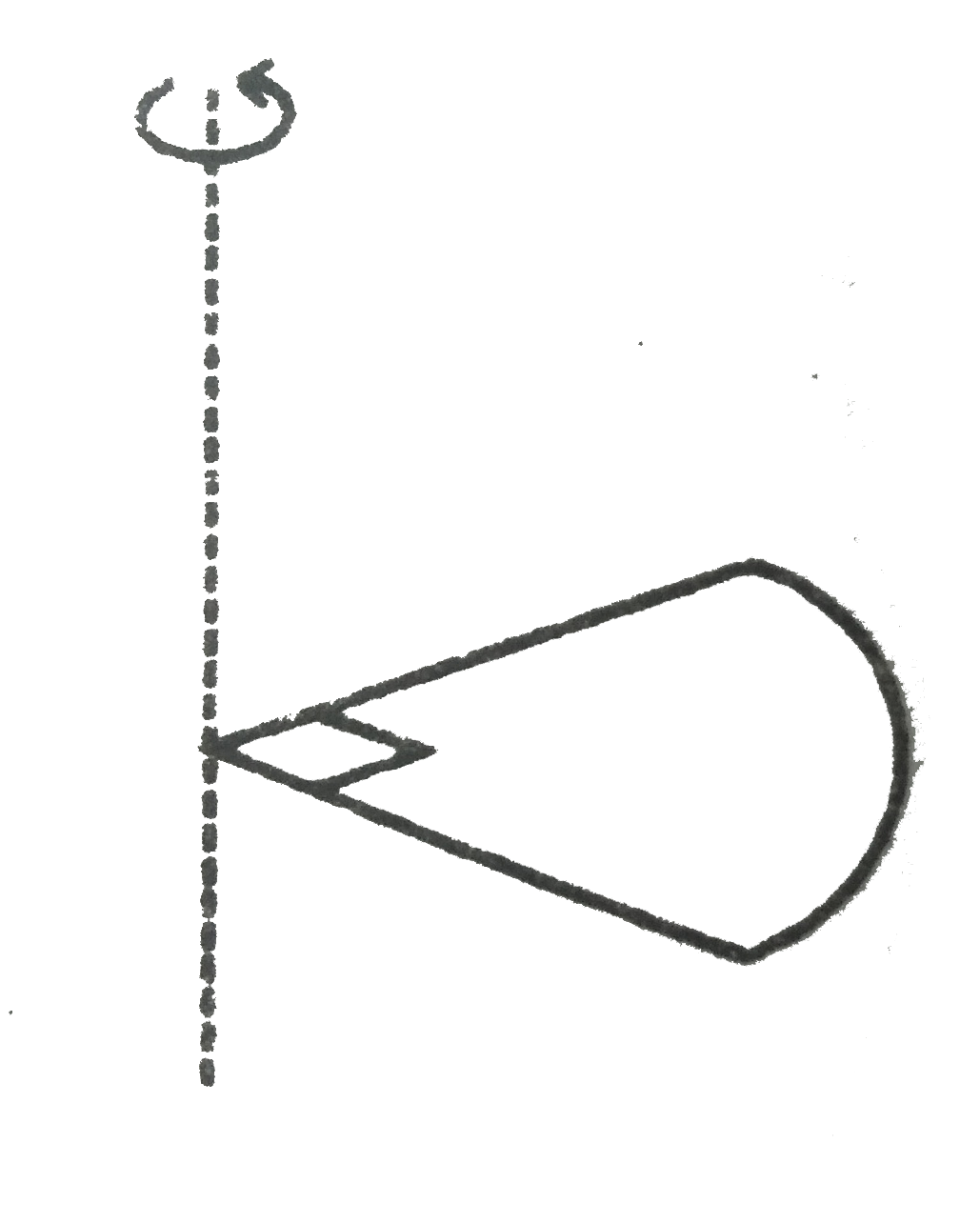A thin circular metal disc of radius 500.0 mm is set rotating about a central axis normal to its plane. Upon raising its temperature gradually, the radius increases to 507.5 mm. The percentage change in the rotational kinetic energy will be
The correct Answer is:D
To solve the problem of finding the percentage change in the rotational kinetic energy of a thin circular metal disc when its radius increases, we can follow these steps:
Step 1: Understand the formula for rotational kinetic energy
The rotational kinetic energy (KE) of a disc is given by the formula:
KE=12Iω2
where I is the moment of inertia and ω is the angular velocity.
Step 2: Calculate the moment of inertia for the disc
The moment of inertia I for a thin circular disc about an axis through its center is given by:
I=12mr2
where m is the mass of the disc and r is its radius.
Step 3: Determine the initial and final moment of inertia
Initially, the radius r1=500.0mm=0.5m:
I1=12m(0.5)2=12m(0.25)=18m
After the radius increases to r2=507.5mm=0.5075m:
I2=12m(0.5075)2=12m(0.2575)=18m(0.2575/0.25)=18m(1.03)
Step 4: Calculate the initial and final kinetic energy
Assuming the angular velocity ω remains constant, the initial and final kinetic energies can be expressed as:
KE1=12I1ω2=12(18m)ω2=116mω2
KE2=12I2ω2=12(18m(1.03))ω2=1.0316mω2
Step 5: Calculate the change in kinetic energy
The change in kinetic energy ΔKE is:
ΔKE=KE2−KE1=(1.0316mω2−116mω2)=0.0316mω2
Step 6: Calculate the percentage change in kinetic energy
The percentage change in kinetic energy can be calculated as:
Percentage Change=(ΔKEKE1)×100=⎛⎝0.0316mω2116mω2⎞⎠×100=0.03×100=3%
Final Answer
The percentage change in the rotational kinetic energy of the disc is 3%.
---
The rotational kinetic energy (KE) of a disc is given by the formula:
KE=12Iω2
where I is the moment of inertia and ω is the angular velocity.
The moment of inertia I for a thin circular disc about an axis through its center is given by:
I=12mr2
where m is the mass of the disc and r is its radius.
Initially, the radius r1=500.0mm=0.5m:
I1=12m(0.5)2=12m(0.25)=18m
I2=12m(0.5075)2=12m(0.2575)=18m(0.2575/0.25)=18m(1.03)
Assuming the angular velocity ω remains constant, the initial and final kinetic energies can be expressed as:
KE1=12I1ω2=12(18m)ω2=116mω2
KE2=12I2ω2=12(18m(1.03))ω2=1.0316mω2
The change in kinetic energy ΔKE is:
ΔKE=KE2−KE1=(1.0316mω2−116mω2)=0.0316mω2
The percentage change in kinetic energy can be calculated as:
Percentage Change=(ΔKEKE1)×100=⎛⎝0.0316mω2116mω2⎞⎠×100=0.03×100=3%
The percentage change in the rotational kinetic energy of the disc is 3%.
Topper's Solved these Questions
- BOOK - CENGAGE PHYSICS ENGLISHCHAPTER - CALORIMETRYEXERCISE - Multiple Correct25videos
CALORIMETRY
- BOOK - CENGAGE PHYSICS ENGLISHCHAPTER - CALORIMETRYEXERCISE - Comprehension30videos
CALORIMETRY
- BOOK - CENGAGE PHYSICS ENGLISHCHAPTER - CALORIMETRYEXERCISE - Subjective25videos
CALORIMETRY
- BOOK - CENGAGE PHYSICS ENGLISHCHAPTER - BASIC MATHEMATICSEXERCISE - Exercise 2.620videos
BASIC MATHEMATICS
- BOOK - CENGAGE PHYSICS ENGLISHCHAPTER - CENTRE OF MASSEXERCISE - INTEGER_TYPE1videos
CENTRE OF MASS
Similar Questions
A circular disc made of iron is rotated about its axis. If due to the change of surrounding temperature its angular speed increased by 1%, then find the percentage change in its kinetic energy
View SolutionCircular disc of mass 2 kg and radius 1 m is rotating about an axis perpendicular to its plane and passing through its centre of mass with a rotational kinetic energy of 8 J. The angular momentum is (Js) is
View Solution
Knowledge Check
- Question 1 - Select One
One quarter sector is cut from a uniform circular disc of radius R. The sector has mass M. IT is made to rotate about a line perpendicular to its plane and passing through the centre of the original disc. Its moment of inertia about the axis of rotation is
AMR2/2BMR2/4CMR2/8D√2MR2
A quarter disc of radius R and mass m is rotating about the axis OO' (perpendicular to the plane of the disc) as shown. Rotational kinetic energy of the quarter disc is
 View Solution
View SolutionA circular disc of mass 100 g and radius 10 cm' is making 2 rps about an axis passing through its centre and perpendicular to its plane. Calculate its kinetic energy.
View SolutionA metallic circular disc having a circular hole at its centre rotates about an axis passing through its centre and perpendicular to its plane. When the disc is heated:
View SolutionA metallic circular disc having a circular hole at its centre rotates about an axis passing through its centre and perpendicular to its plane. When the disc is heated:
View SolutionOne quarter sector is cut from a uniform circular disc of radius R. This sector has mass M. It is made to rotate about a line perpendicular to its plane and passing through the centre of the original disc. It moment of inertia about the axis of rotation is.
 .View Solution
.View SolutionA uniform circular disc of mass 200 g and radius 4.0 cm is rotated about one of its diameter at an angular speed of 10 rad/s. Find the kinetic energy of the disc and its angular momentum about the axis of rotation.
View SolutionA circular disc has a mass of 1kg and radius 40 cm. It is rotating about an axis passing through its centre and perpendicular to its plane with a speed of 10rev/s. The work done in joules in stopping it would be-
View Solution

